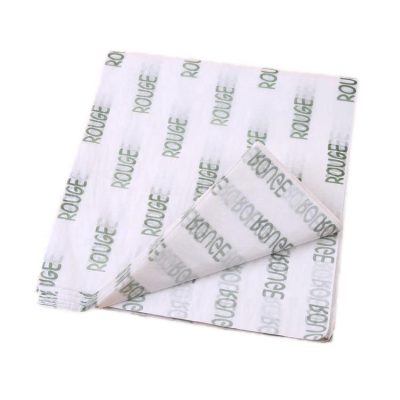Whiteness refers to the ratio of the reflectance of an opaque paper under near blue light (wavelength 457nm) to the reflectance of a magnesia board with known reflectance under the same illumination, expressed as a percentage. (Brightness and whiteness are two different concepts, but our papermakers are accustomed to calling brightness whiteness, and sometimes the term whiteness is actually brightness).
The factors that affect the whiteness of paper are:
1) Brightness of pulp
Pulp whiteness is the basic whiteness that determines the whiteness of paper. The whiteness of the pulp is high, and the whiteness of the produced paper is also high, and vice versa.
2) The amount of filler added
The whiteness of general fillers (such as clay, talc, calcium carbonate, titanium dioxide, etc.) is higher than that of ordinary pulp, so adding fillers to pulp can improve the whiteness of paper.
In production, due to the different filler content on both sides of the paper sheet, the whiteness on both sides of the paper sheet differs by 0.5-3.0 percentage points. When surface coating with white pigments, the whiteness can be significantly improved.
3) The effect of sizing:
The application of rosin gum can reduce the whiteness of the paper by 3 to 5 percentage points.
With AKD sizing, the whiteness of the paper is higher than that of rosin sizing. For example, in the production of coated paper, with AKD sizing, the whiteness of the paper is 5-6% higher than that of rosin sizing.
4) Influence of pulp lignin content
High lignin content or excessive bleaching in the pulp will cause the pulp to age and turn yellow and reduce the whiteness of the pulp, which is more prominent in newsprint made from groundwood pulp.
5) Effects of drying
Excessive paper drying, high roll temperature and long storage time; calendering of paper also reduces whiteness.
6) The turbidity of the production water has an influence
Paper produced with clean, low turbidity water is whiter than paper produced with turbid water.
From this point of view, there are many factors affecting the whiteness of paper, which is a system problem.
Don’t expect a single word from an expert to help you solve the problem. Think of the medicine to the cure, and the immediate effect.
In addition to the above factors, the raw materials used for pulping, the degree of lignin removal (kappa value), the design of the bleaching process, etc. should also be considered.
Therefore, to improve the whiteness, it is not only Baidu, but it is necessary to constantly explore and summarize experience according to its own actual conditions.









